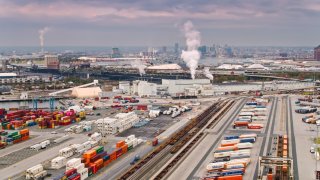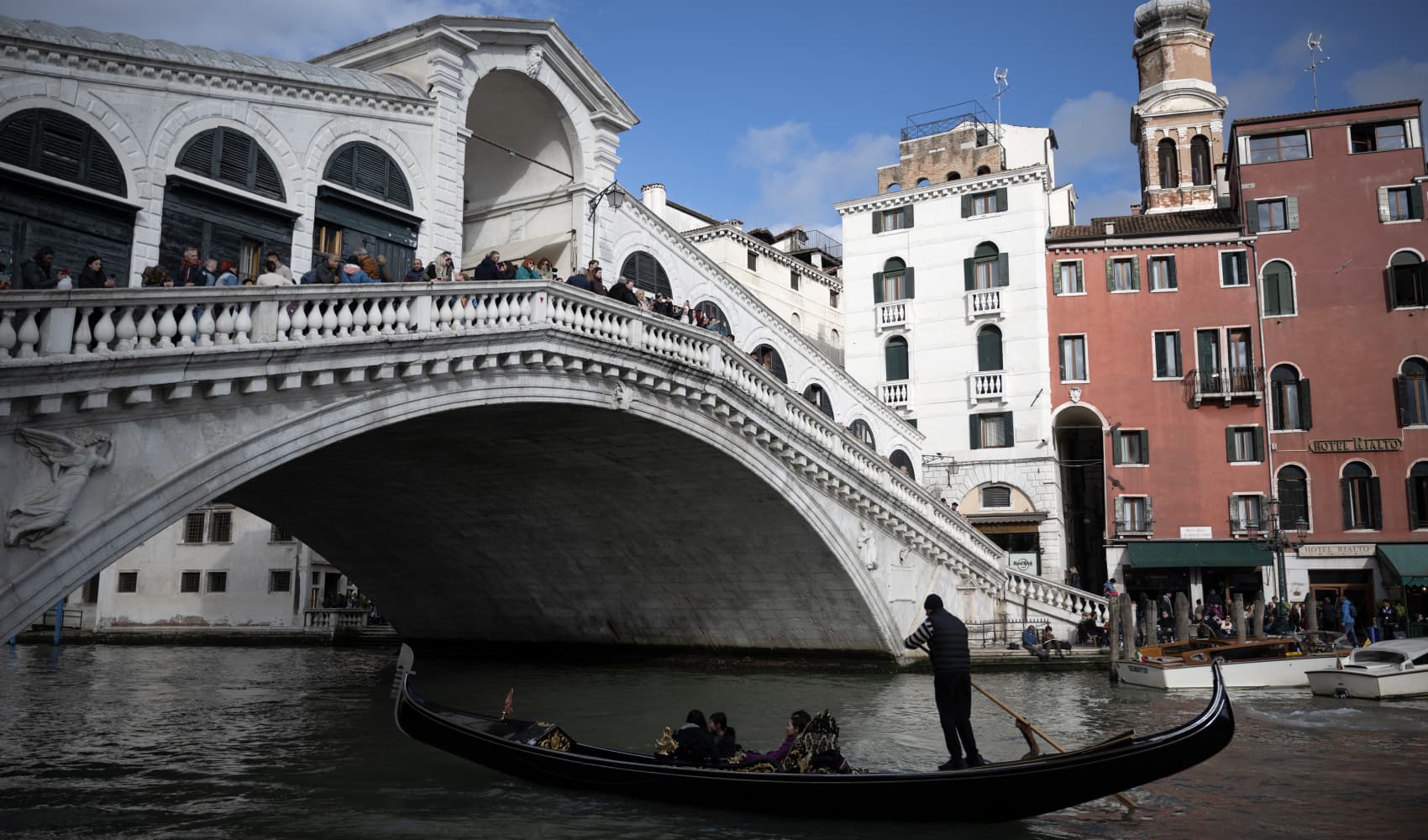
- The new CSX freight rail route moving containers diverted as a result of the Key Bridge collapse from New York to Baltimore has completed its first shipments.
- Containers arriving in Ports America Chesapeake Terminal will either be unloaded at site and moved by truck to local warehouses or go onto Chicago.
- Norfolk Southern announced Wednesday it will launch a new rail service to handle diverted freight between New York and Baltimore.
Just days after CSX announced a new rail line in response to the Port of Baltimore closure, the Baltimore-bound containers that were diverted to the Port of New York and New Jersey are back being unloaded in Baltimore.
"We will keep this in play for the duration of the port closure," said Mark Schmidt, vice president and general manager of Ports America Chesapeake, one of the port operations of Ports America, North America's largest marine terminal operator, which is owned by the Canada Pension Plan Investment Board. "We get visibility during our day-to-day calls with the teams working on the wreckage out on the water," he said.
Get New England news, weather forecasts and entertainment stories to your inbox. Sign up for NECN newsletters.
CSX started discussions last week with Ports America to see how it could effectively move the diverted cargo. The volume of containers coming in may be the same but the touch points in the handling of these containers changed. "There are established supply chain touchpoints in logistics so when one becomes disrupted, it makes it hard to manage exports and imports and where they go in and out," Schmidt explained.
The train route moving the diverted cargo includes Chicago; Kearney, New Jersey; and Baltimore.
According to supply chain intelligence firm Project44, containers originally destined for the Port of Baltimore have been rerouted to the ports of Norfolk (43%), New York (26%), Wilmington (13%), and Newark-Elizabeth, New Jersey (10%), with another 8% diverted to other ports.
Money Report
Railroads are favored by shippers including retailers because of cost. While rail transport is slower, trucking comes at a higher price point. Rail is also attractive for shippers who want to be greener in their transportation, generally four times more fuel-efficient than trucks and emitting about 75% fewer greenhouse gases.
Norfolk Southern announced on Wednesday it is launching a dedicated service to facilitate the flow of diverted freight between the Elizabeth Marine Terminal at the Port of New York and New Jersey and the Seagirt Marine Terminal in Baltimore. The service will start on April 5. Norfolk is in discussions with Ports America to extend this service directly on-dock at their Seagirt Intermodal Container Transfer Facility. Norfolk Southern's Triple Crown Services network will assist in the dedicated intermodal service and will work with cargo owners who need door-to-door service.
As the Port of Baltimore crisis unfolded, many major ocean carriers invoked contract clauses transferring responsibility for transportation of cargo from diverted ports to shipping clients.
Even though marine container ship operations are closed, land operations at the Port of Baltimore have not stopped.
"This is a result of good cooperation with the International Longshoremen's Association, the largest union of maritime workers in North America, and the Port of Baltimore," Schmidt said. "Our labor has stayed the same. What we are doing on the waterside to help keep ILA labor employed is training our water crews, like crane operators, clerking staff and some dock bosses land skills."
The ILA represents longshoremen at the East Coast and Gulf ports, including the Great Lakes, major U.S. rivers, Puerto Rico, and Eastern Canada, and are currently in labor negotiations over a contract that expires on September 31.
Scott Cowan, president of the International Longshoremen's Association Local 333, which represents the Baltimore workers, has said that 85 percent of his members are "daily hires," meaning they only work when a ship is in dock.
For the trucking community, it has been business as usual, working through the containers at the port, though no new containers are being unloaded from vessels. According to Schmidt, there are now less than 500 import containers in the yard. Normally, the Ports America Chesapeake container yard for truck pickup would hold 3,000-5,000 import containers. Trucking turn times, which measure the time it takes to go into the port to pick up a container and leave, are normal at 60 minutes, according to Schmidt.
Schmidt said there is a four-week window at terminals to stay on top of incoming containers to help make staffing decisions.
"We are monitoring empties as they come back and will divert those to the Port of New York and New Jersey," Schmidt said. "Exports are not coming into our terminal."
There are ten vessels stranded at the Port of Baltimore, including one roll-on/roll-off vessel loaded with cars, farm equipment, and trucks stranded in the port. As of now, Schmidt says there is no discussion of unloading that RORO vessel, and rerouting the vehicles to another port.
The Port of Baltimore is the nation's largest for auto/farm equipment/light truck import-exports. The port processed approximately $36 billion of the nation's international vehicles trade in 2023, according to data from Dun & Bradstreet. Dun & Bradstreet estimates a weekly economic impact of $700 million related to vehicles, and an overall weekly direct economic impact of the Baltimore port closure at approximately $1.7 billion, based on the average weekly value of goods that were processed through the port in 2023.The indirect impact due to the disruption in the cross border flow of goods through the Port of Baltimore is estimated to be $6.6 billion per month.
According to Oxford Economics' Supply Chain Stress Index — which the closure of the Port of Baltimore and other recent supply chain disruptions prompted the firm to bring back — while supply chain conditions have improved since the end of the pandemic, the risks are "tilted toward renewed supply chain stress as ongoing conflict in the Middle East, drought-related issues at the Panama Canal, and the recent collapse of the Key Bridge in Baltimore will impact trade, inventories, and inflation."







